40 maps that explain the main events of the world history
Опубликовано 2015-03-08 14:00
Блестящие собрания карт с комментариями, объясняющими ход ключевых мировых событий. Каждому историческому событию посвящены сорок карт, многие из которых уникальны, в учебниках не публикуются и широкой публике неизвестны
в серии 40 maps that explain the main events of the world history, в частности, выполнены:
40 maps that explain World War I
by on August 4, 2014 for VOX
40 maps that explain the Middle East by Max Fisher
http://www.vox.com/a/maps-explain-the-middle-east
40 maps that explain the Roman Empire by Timothy B. Lee
http://www.vox.com/2014/8/19/5942585/40-maps-that-explain-the-roman-empire
Ниже в качестве примера приводятся выдержки из блестящей подборки карт с комментариями роекта компании VOX 40 maps that explain the main events of the world history:
maps that explain World War I
by on August 4, 2014 for VOX

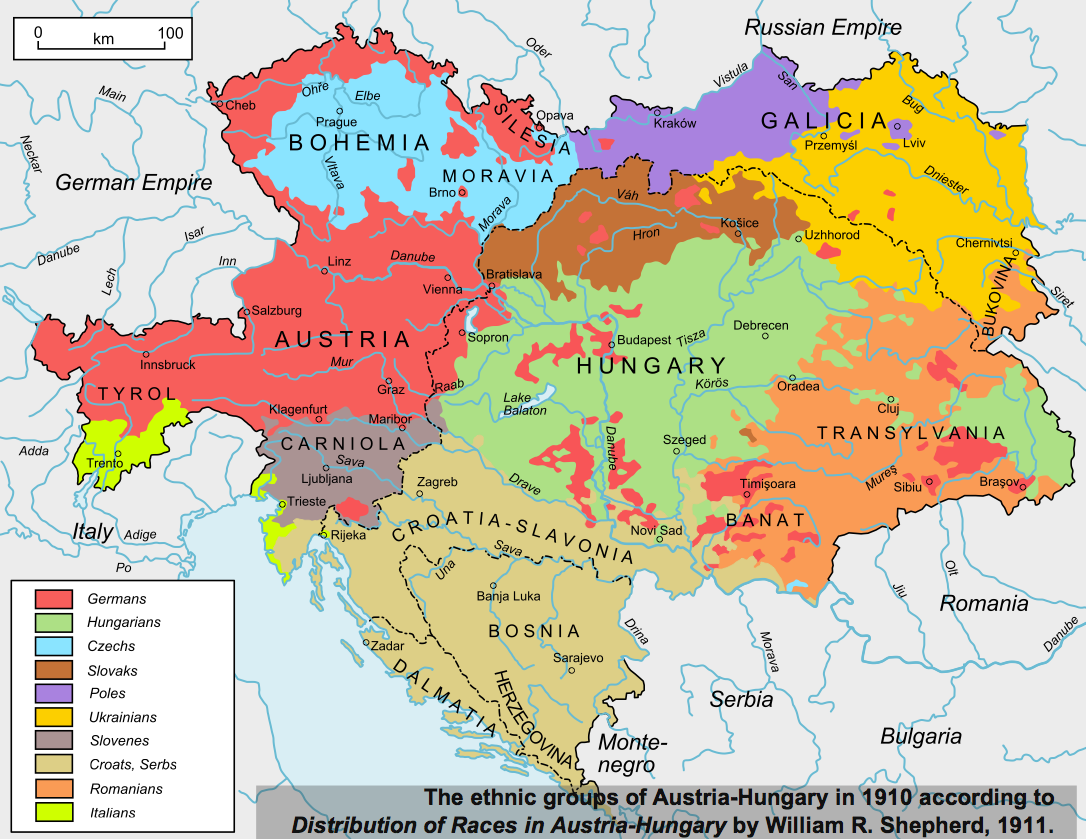
Where the war stood in 1916
This elegant map illustrates where the battle lines stood on August 1, 1916, exactly two years into the war. Russia fared poorly, losing control of territory in what's now Poland, Ukraine, and the Baltics, while Serbia had been overrun. Fighting in the West and in Italy had accomplished essentially nothing beyond what the Germans had managed to achieve before the Battle of the Marne. The tiny blue line near Salonika in Greece represents a small Allied force that had seized the city to try to maintain a token force in the Balkans. Their presence embroiled Greek politics in crisis, but had little military significance until the Central Powers were on their last legs.
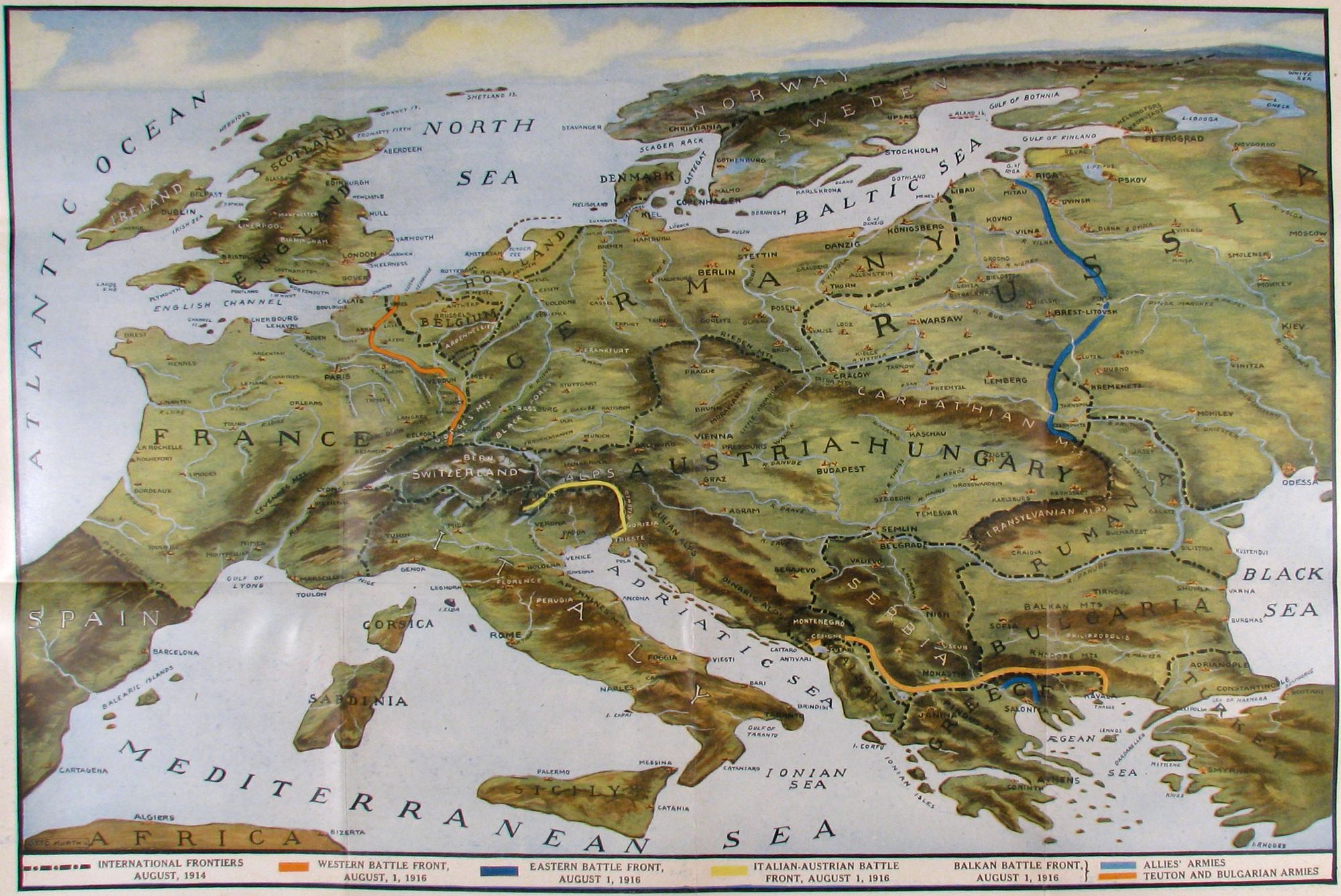
Russia capitulates in the Treaty of Brest-Litovsk
Following the collapse of the Czarist regime in the February 1917 Revolution, a provisional government led by Aleksander Kerensky came to power in Russia. Kerensky's government was unable to impose discipline on the unraveling Russian military or conduct effective military operations. German authorities allowed Vladimir Lenin, then in exile in Switzerland, to travel via special train through German-occupied territory into Russia where he and his Bolshevik allies took political leadership of the anti-war cause. After seizing power in the October Revolution, the new Bolshevik government was forced to negotiate peace with the Germans from a position of extreme weakness. At the Treaty of Brest-Litovsk in March 1918, Russia abandoned its previous rule over Finland, most of Poland, Latvia, Lithuania, Estonia, Ukraine, and Belorussia. German plans called for this territory to be reorganized as a series of German-dominated satellite states but the failure of the Spring Offensive in the West and the subsequent German surrender rendered the new order in the East irrelevant.
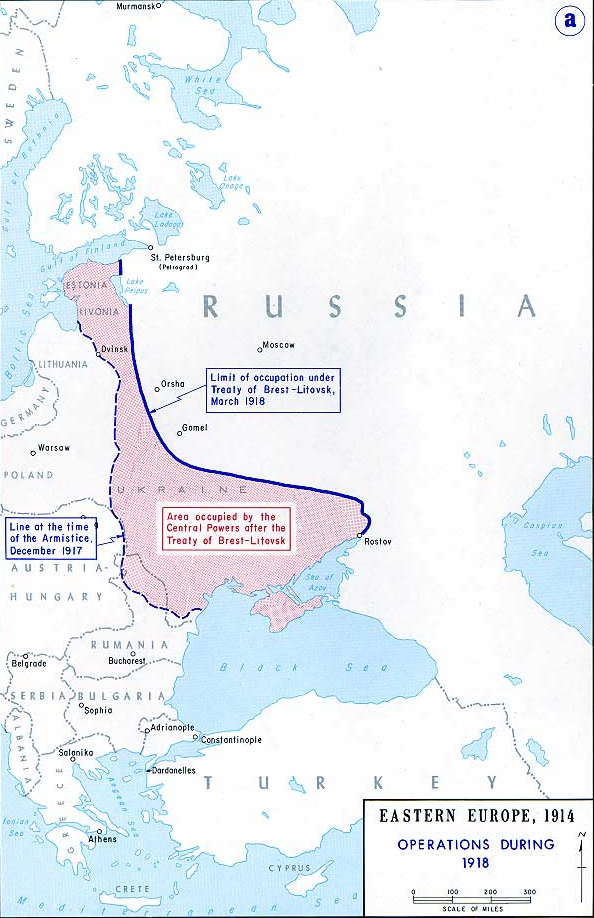
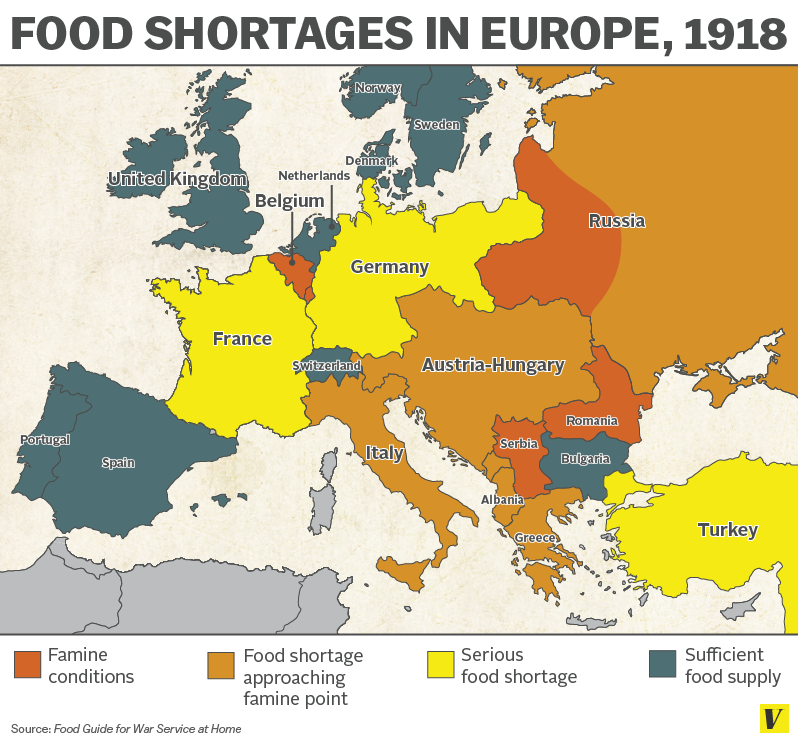
Changes to Europe after World War I
The war officially ended when Germany agreed to lay down its weapons on November 11, 1918. In 1919, the victorious Allies, led by Britain, France, and the United States, met in Paris to decide the fate of the empires they had defeated. Their decisions transformed Europe's borders. The Austro-Hungarian empire was carved up into six new countries. One of these, the awkwardly named Czechoslovakia, would split into the Czech Republic and Slovakia in 1992. The former Serbia was combined with territories annexed from Austria-Hungary to form Yugoslavia, a national home for South Slavic peoples. It, too, disintegrated in the early 1990s, producing several small nations that exist in the Balkans today. The Soviet Union lost some of the Russian Empire's former territory to the new Baltic states and to Poland. Poland, along with France, got chunks of Germany. Czechoslovakia and Yugoslavia are gone, but the other new states persist today, so it's fair to say that World War I set the contours for the modern European state system.
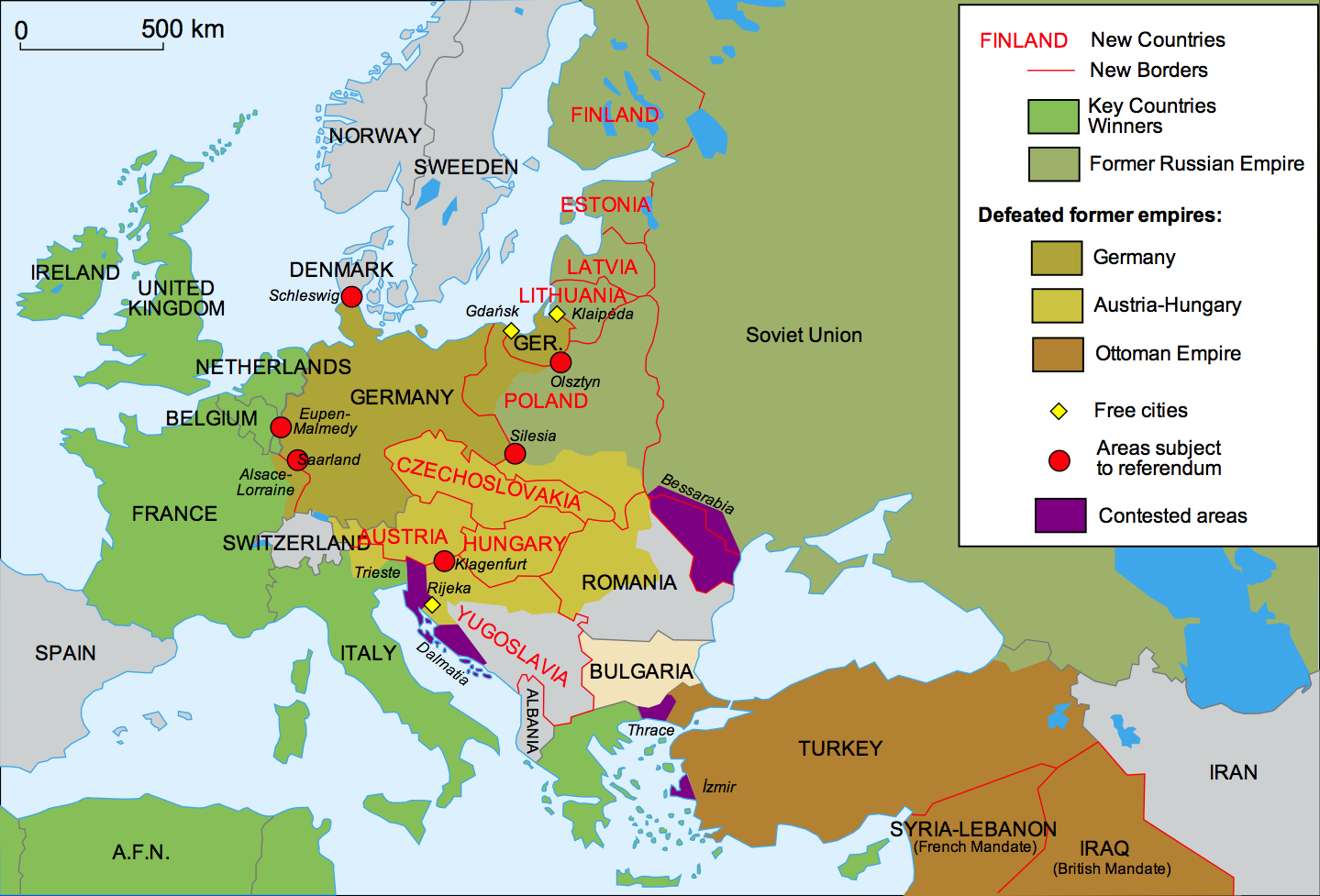
Learn more:
- 40 maps that explain the Middle East
- An awesome map of the last time each European country was occupied
- 40 maps that explain the Roman Empire
|
Оставлять комментарии могут только зарегистрированные пользователи. Войдите в систему используя свою учетную запись на сайте: |
||
 History*
History*